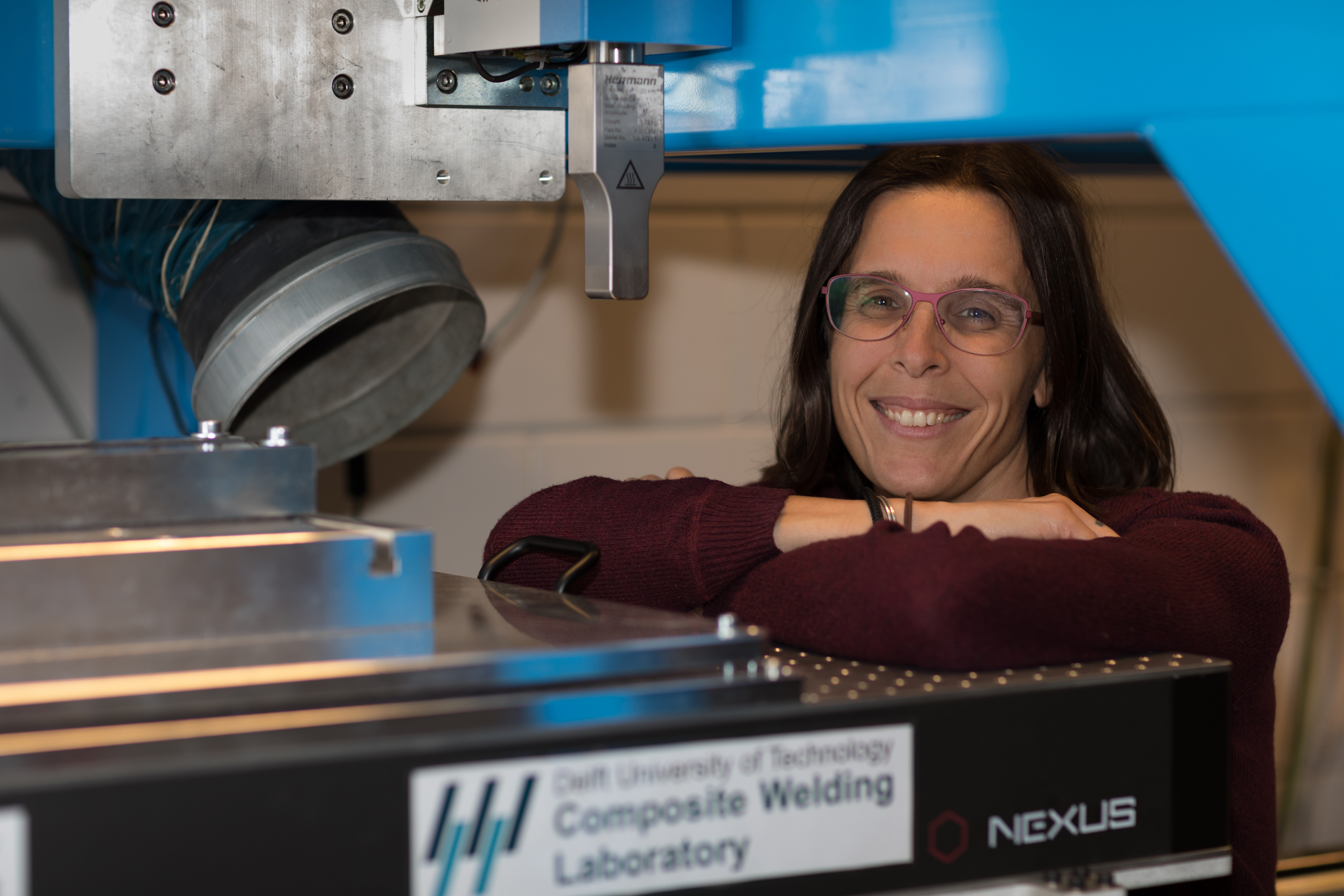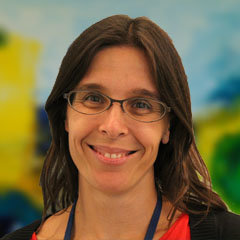Irene Fernandez Villegas
Composite is a lightweight, strong material, which can be used to replace current materials in aviation and space travel. But it has its disadvantages. Composite is difficult to join, for example. Irene Fernandez Villegas, Assistant Professor in Aerospace Structures and Materials, is trying to unravel this mystery. She is an expert in welding composite materials.
Joining metals is simple: rivets, bolts or welding are all efficient methods. But it is more complicated with composites: they simply don´t want to play ball. Fernandez Villegas: “There’s no good technique available, which makes the manufacture and assembly of current composite aircraft structures slow and expensive. Our job is to look for alternative, cost-effective techniques. Welding is a very good option: it's fast, energy-efficient, high-quality and hence sustainable.”
The fact that welding composite materials became her specialism is a fortunate twist of fate: “I did my PhD research in this field at the Polytechnical University of Madrid. It was at times a frustrating process and once I'd finished, I swore never to go near the subject again. Now I'm teaching two Master's courses, including joining methods, and I head the Composite Welding Research Group at TU Delft. And I think it's fantastic. As research group leader I indirectly conduct research and I teach other people the tricks of the research trade in the hope that they´ll become as enthusiastic as I am.”
What's good about welding is that it´s fast and energy-efficient. But this also makes it a challenge: “As you heat locally, the process is highly affected by its surroundings. This affects the reliability and repeatability of the welding process. My approach is to develop smart welding processes that provide in situ information that can be used to automatically adjust the process. This information is crucial, because every change around the welding alters the process.”
Welding is the best option to join composites structures: it's fast, energy-efficient, high-quality and that makes it sustainable.
Irene Fernandez Villegas
Composites are strong and lightweight, have a long lifespan and are sustainable. “When used for aircraft and trains, for example, you need less material to sustain the same loads than with metal. This means less energy is needed to propel them, and lower CO2 emissions are produced. In the case of an electric car, the CO2 emission is zero. On the other hand, composites are plastics and the fibres cannot be recycled. Luckily, the composites that can be welded happen to be easier to recycle.”
Mad about microscopes
The experimental aspect of her work really suits Fernandez Villegas. “I had a chemistry set when I was a child and I could mix things and make them explode. I thought it was fantastic. I also had a microscope with which you could see really tiny objects. Not really of course, but I was mad about that microscope. I still love microscopes and train my students to use them. We work here with materials: we make them and we break them. As far as I'm concerned, people now are obsessed with the readings on machines. If the figures don't add up, we think up theories to explain what's going on. But the evidence is right there in front of us. You just have to look at it through the microscope!”
Fernandez Villegas wants to give the next generation of researchers and technicians more pleasure in their work. “We teach our students all the technical stuff and how to become outstanding researchers, but not how to cope with stress and the endless mountains of work. Investing in this aspect is another way of guaranteeing sustainable development. I had to find my own way, and now I want to start a course to enable others to develop their soft skills. That might sound strange in our technical world, but it's exactly these soft skills you need to get on in life as an academic and a human being.”
Fernandez Villegas, for example, realised that she needs time, space, peace and quiet in order to think. “I have this at home so I’m super-productive. I enjoy writing papers, but it used to take me forever. Now I can do it in a week.” Marie Curie used to be her hero, but these days it's Matthieu Ricard, a biochemist who became a Buddhist monk. “He teaches about happiness and I find him a real inspiration.”
While in Bali last summer, she saw for herself the vital importance of working towards sustainability. “It was a coral reef area but the coast was full of dead coral. Another island was strewn with plastic. You hear about it on the news, but it’s awful to see it with your own eyes. I do just a little bit for the environment by not owning a car, but I'm highly motivated to fight for a cleaner world.”


